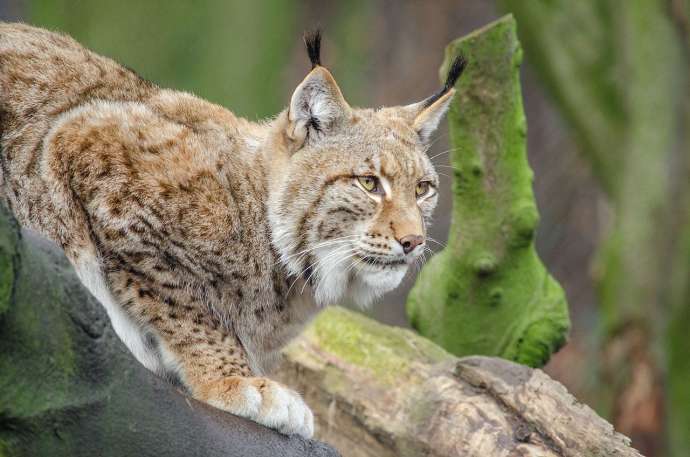Časoris is an online newspaper aimed at children. Each week we’ll take an article and post it here as a Slovene-English dual text.
Risi v naših gozdovih
Lynx in our forest
Written by Dora Adamič, translated by JL Flanner & G Translate
Risi, ki so jih v okviru evropskega projekta Life Lynx doselili v slovenske in hrvaške gozdove, so se v njih udomačili in se že nekaj časa uspešno razmnožujejo.
Lynx, which were moved to Slovenian and Croatian forests as part of the European Life Lynx project, have become at home in them and been successfully breeding for some time.
Projekt Life Lynx je evropski projekt, ki se zavzema proti izumrtju risa v dinarskih in alpskih gozdovih.
The Life Lynx project is a European project working against the extinction of lynx in the Dinaric and Alpine forests.
V naravo so izpustili že 13 risov – štiri na Hrvaškem in devet v Sloveniji.
Thirteen lynxes have already been released into the wild - four in Croatia and nine in Slovenia.
»Velika večina jih je preživela, vsi so za zdaj ostali na območju, kjer so tudi drugi risi. Tako se lahko s parjenjem vključijo v populacijo teh živali,« pravi Tomaž Skrbinšek z Biotehniške fakultete.
“The vast majority of them have survived, all of them have remained in the area for now, where there are also other lynxes. In this way, they can become involved in the population of these animals by mating, “says Tomaž Skrbinšek from the Biotechnical Faculty.
V poročilu pravijo, da se je velik del doseljenih risov že vključil v populacijo.
The report says a large proportion of the lynx that have arrived have already joined the population.
Znanstveniki so v dveh letih zabeležili pet legel v Dinaridih. Prvi priseljeni ris Goru je imel mladičke vsaj dvakrat, če ne trikrat.Lani so leglo zaznali tudi v Julijskih Alpah.
Scientists have recorded five litters in the Dinarides in two years. The first immigrant lynx – Gora - had puppies at least twice, if not three times.
Število risov v naravi spremljamo s pomočjo fotografij z avtomatskimi kamerami in s pomočjo genetskih raziskav.
The number of lynxes in the wild is monitored with the help of photographs from automatic cameras and genetic research.
Tomaž Skrbinšek – »Kožuh risa je namreč pokrit s pegami, ki se med posameznimi risi razlikujejo. Tako jih prepoznavamo in razlikujemo.«
Tomaž Skrbinšek – "The lynx's fur is covered with spots that differ between individual lynxes. That's how we recognize and distinguish them.”
Vsaka celica risovega telesa vsebuje edinstvene genetske podatke, ki jih risi puščajo v okolju z odpadlimi dlakami, urinom in iztrebki. Raziskovalci tako rise prepoznavajo tudi s pomočjo DNK.
Each cell of the lynx's body contains unique genetic data that lynx leave in an environment with lost hair, urine and feces. Researchers also identify such lynx using DNA.
»Vzorce poberemo in analiziramo v laboratoriju. Tako lahko prepoznamo družinske odnose med posameznimi risi. Potomce tistih, ki smo jih doselili v projektu, lahko ločimo od ostalih risov v populaciji,« dodaja Tomaž Skrbinšek.
“Samples are collected and analysed in the laboratory. We can thus identify family relationships between individual lynxes. The descendants of those who immigrated in the project can be distinguished from other lynxes in the population, "adds Tomaž Skrbinšek.
Rise iz projekta bodo še naprej pozorno spremljali. Raziskovalci upajo, da bodo lahko letos potrdili, da so si ustvarili nove potomce.
Lynx from the project will continue to be closely monitored. Researchers hope to be able to confirm this year that they have created new offspring.
Read more stories and improve your Slovene at Časoris, while all our dual texts can be found here.







